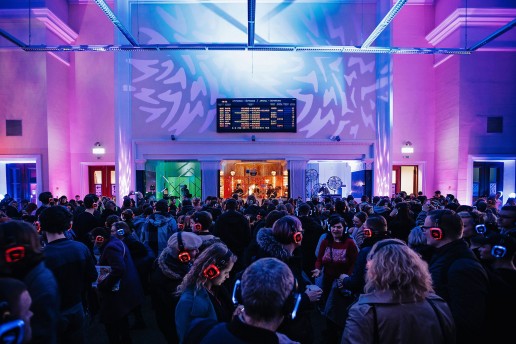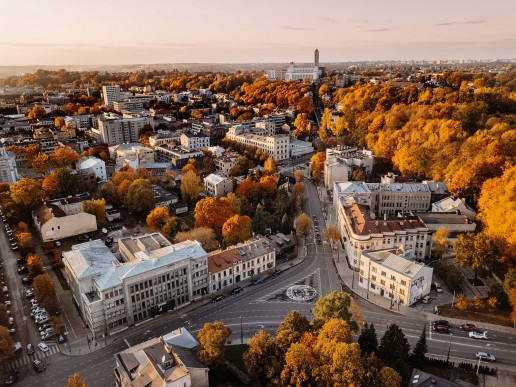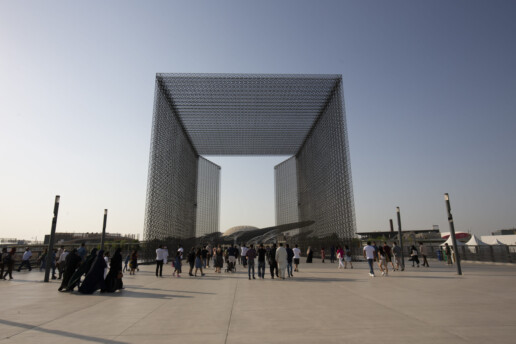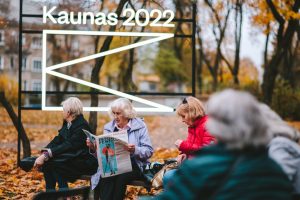Universal Design Helps Shaping a Sustainable, Accessible, Functional and Aesthetical Contemporary Capital
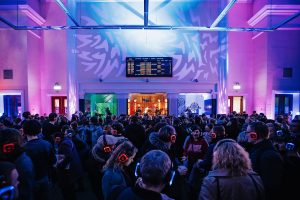
Happiness is an emotion one can project. Now that’s an ambitious statement, right? This is precisely why ‘Designing Happiness’ is one of the key pillars supporting the project of Kaunas – European Capital of Culture 2022.
In 2015, Kaunas became the first city in the region to become the UNESCO City of Design. The title inspires to continue shaping a comfortable contemporary city and educating its residents with the help of quality international examples, news and ideas. Starting with audience development and not forgetting the importance of nature, design as a tool is vital for the success of all programmes of Kaunas 2022. It’s now time to look at ‘Designing Happiness’ itself.
International Day of Happiness
First celebrated in Kaunas three years ago, the Day of Happiness is one of the great success stories of the Kaunas 2022 project. This day became an enormous educational project that taught the people of our city the benefit of attentiveness to others, attention to nuance, and sensitivity to detail. It’s evident the festival will remain in Kaunas even after the conclusion of the European Capital of Culture programme.
The Day of Happiness joins thousands of people in various companies, cultural organisations, housing associations, and school and kindergarten communities. The program explores a new theme every year, and in 2022 Kaunas celebrate the happiness of being part of a community.
The official date of the festivity is March 20; before it, an international congress ‘On Happiness. Presuppositions 2022’ will take place in Kaunas. With the help of science and art, this congress will seek to examine and test the presuppositions of happiness.
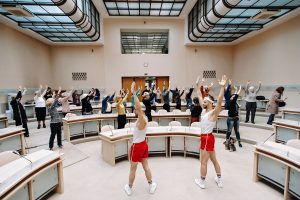
Unlocking Happiness for all
In 2020, an online culture accessibility guide, ‘Kaunas for all’, was published. It is the first publication of its kind dedicated to cultural organisations, objects managers, and event organisers to make cultural objects and events more accessible for all social groups, namely those with special needs.
The guide is free to use for all cultural organisations, event programmers, and curators in Lithuania and other countries; it aims to rethink one’s surroundings and open oneself to new audiences. The guide is accompanied by a signage system suitable for all cultural institutions and helps them broaden their audiences.

2022 as a Year of Culmination
One of the most intriguing ideas under the umbrella of ‘Designing Happiness’ is Nemuno7, a river engineering and landscape design project that is unique in Europe and will serve as a public cultural space.
Nemuno7 will be officially opened on May 22. Located on the bank of river Nemunas near Zapyškis, a town in Kaunas District, the object created on a Czechoslovak construction dredger first put in use in 1965 combines technological history, historical heritage, and contemporary architecture. It is expected to become a new cultural attraction in Kaunas for locals and tourists. It will also have space for artistic residencies. Also, continuing on the subject of sustainability, the site will be home to pioneer plants that grow in open habitats and quickly adapt to extreme cultivation conditions.
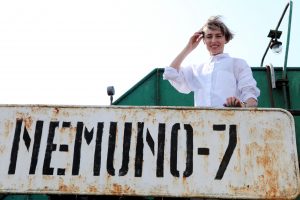
The third Landscape Design Festival Magenta that explores the possibilities of urban nature will reach its peak in 2022. Audiences will be able to view installations, objects, and other works of art created by international teams of artists, architects, and landscape designers from Lithuania, Poland, Chile, Spain, Germany, Serbia, Mexico, the Netherlands, and other countries. These will all be works specially created for an urban context.
The festival’s events will span a broad spectrum, including education programmes, public discussions for city residents; public discussions about business, city government, industry, and society; tours; interdisciplinary projects; events; tactical urbanism; and the creation of public spaces and landscape design sites.
An International Meeting Spot
For 2022, global design organisations, including ICoD (International Council of Design), BEDA (Bureau of European Design Associations), EIDD (Design for All Europe) and UNESCO, have chosen Kaunas, as the European Capital of Culture, as the site to organise their most important annual events. This will be a unique opportunity to present Kaunas on the international stage and feel that a city is about co-creating.
Time to book those tickets – for October, at least. This will be the month when the Assembly of International Design Networks, the Lithuanian national Good Design prize Awards, and the International Kaunas Festival of Design will occur. The latter will be an exclusive series of interdisciplinary events – exhibitions, workshops, meetings, conferences, and installations in the city’s public spaces – that will invite the city’s residents and visitors to learn more about the roots of Kaunas’ authentic design, the creators of contemporary Lithuanian design, design innovations, and progressive practices used by designers abroad.

For the first time, Kaunas will host the unique design innovation programme 5X5®, created by Designregio Kortrijk vzw of Flanders, Belgium. This will be an exceptional opportunity for Kaunas-based companies doing business in different sectors to collaborate for one year with designers based on a patented 12-step programme in the development of new projects and the refining of already existing endeavours, services, or processes. An exhibition held during the Kaunas Design Festival will present the results of a joint Flemish and Lithuanian 5X5® design innovation programme.
The programme is not the only example of a cultural collaboration between Kortrijk and Kaunas, both members of the UNESCO Cities of Design Network. To enhance the friendship, Kortrijk will be sending an enormous letter K, also known as K-Totem, to Kaunas. Decorated with constantly changing visual designs in Kaunas, the K-Totem will be installed in the Lithuanian Constituent Seimas square in the Old Town. The multifunctional sculpture already appreciated by the Belgian crowd will become a space for self-expression by local graphic designers and illustrators. In fact, Flemish artists will decorate the Kaunasian K-Totem, while Lithuanian creators will travel to do that in Kortrijk.
Revisiting History
The traditional Kaunas International Bone China Symposium will present a unique programme for 2022. In October, the modernist Kaunas Post Office will host an exhibition of unique individual and serial ceramic pieces and original designs assembled from the legendary Jiesia ceramics factory in Kaunas.
An exhibition in the shop windows of Laisvės alėja, the main pedestrian boulevard in Kaunas, will help establish an even more intimate relationship with Lithuanian design heritage. Called precisely that, ‘Lithuanian Design: from Temporary to Contemporary’, it will explore different fields of design, including furniture, graphic design, lighting fixtures, and textiles, as well as key historical periods. All year round, from January 22 to October 20!

Moreover, an interactive exhibition ‘Kaunas Assorti: Graphic Design (Hi)Stories and Their Actualisation’, an interactive exhibition’ will land in Kaunas Picture Gallery. It will present the history of Lithuanian graphic design in the latter half of the 20th century. Posters, sketches, containers, and brand designs will speak, in their own unique way, about a particular time, identity, and sustainability, echoing issues relevant to the present day.
Next year, Kaunas and Kaunas district will become one big European stage and turn the city into a place where you will not escape culture. More than 40 festivals, 60 exhibitions, 250 performing arts events (of which more than 50 are premieres), and over 250 concerts are planned to take place in 2022. It is going to be the year-long non-stop biggest co-creative festival of all. Come co-create and celebrate with us! https://kaunas2022.eu/programa/
https://dizainaskaune.lt/en/
International Assembly of Design Networks will invite to get to know Kaunas better
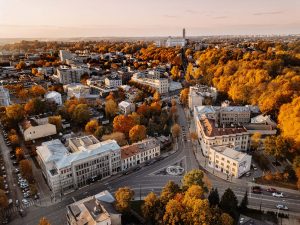
In the Australian city of Geelong, at the annual and virtual meeting of the UNESCO Design Cities Network members, the participants unanimously decided to entrust the 2022 yearly congress to Kaunas. The meeting, which creates an exchange, provides excellent opportunities to present Kaunas more widely and meet specialists who will consult Kaunas on social, environmental, cultural, and urban design issues, which will occur precisely after a year.
The Network of Creative Cities seeks to develop transnational partnerships between cities that have chosen creativity as their strategic development factor in creating sustainable and innovative cities. The network brings together the private and public sectors, professionals, communities, and institutions to share experiences, resources, and knowledge with other network members and foster the growth and emergence of local creative industries.
The event in Geelong provided an opportunity for communities from all 40 design cities to participate and learn about the many projects in the network of creative cities. This year's theme was REIMAGINE, RENEW, REGENERATE, inviting design experts to share and talk about projects that have raised cultural, creative, social, and sustainable initiatives and looked at new challenges or opportunities.
During the meeting, Kaunas submitted a proposal to organize next year's annual network meeting in Kaunas. "Although the format of conferences and the organization of international meetings are in many cases beneficial for a small group of people, this annual Congress of Design Cities can become especially important and successful for Kaunas and its guests. We have been in the UNESCO Network of Design Cities since 2015, but the city neither showed initiative nor participated in other projects for a long time. As a result, we are in a network where we are not known, where we are rarely noticed, and where we have not yet shown our potential. Therefore, this annual congress is an excellent opportunity to raise our heads and display our talents and professionalism to the network members, get acquainted with the design sector, and show Lithuania's attractiveness and creativity through Kaunas city and district. Also, Kaunas benefits by gaining experience from highly active cities in the field of design, learning from successful projects implemented in the world, and establishing economic, cultural, and social contacts with potential partners or customers from abroad." said Gediminas Banaitis-Skrandis, project curator of Kaunas 2022.
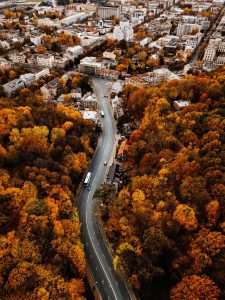
The meeting of the UNESCO Design Cities Network will take place at the same time as the International Assembly of Design Networks "Kaunas - European Capital of Culture 2022", which will also be attended by such global design networks as ICoD (International Council of Design), BEDA (Bureau of European Design Associations ), EIDD (Design for All Europe), will present a comprehensive program and provide an opportunity to learn about the specificities of a multicultural city. "The International Assembly of Design Networks is a unique occasion where the largest organizations in the design sector meet simultaneously in a joint event. This is an opportunity that no member of the invited organizations would want to miss because it will be the first such design Olympics," added G. Banaitis-Skrandis.
During next year's meeting, participants will be involved in Kaunas Design Festival, Lithuanian design exhibition "From Temporary to Contemporary," Landscape Design Festival "MAGENTA," and other projects developed with other partner cities. This is a considerable achievement for Kaunas and its future, which will open wider opportunities, become the beginning of international project ideas and reveal the city through innovative and creative activities.
Genius generates beauty: the experiences of the European Capitals of Culture at Expo 2020 Dubai
The “European Capitals of Culture Day at the Universal Exhibition 2020 Dubai” is an initiative that Matera-Basilicata 2019 Foundation is organising on the 30th October 2021 in the Italy Pavilion at the Expo of Dubai, in partnership with the Commissioner General of Italy and under the patronage of the European Commission. The event is of highly symbolic value considering the fact that it will see the European Capitals of Culture reunite for the first time at the biggest international event post pandemic. Taking its cue from the concept that inspired the Italy Pavilion itself, the initiative is designed to present the European Capitals of Culture that, with their enormous and varied potential of cultural experiences and practices, transform cities, generating beauty and inclusiveness.
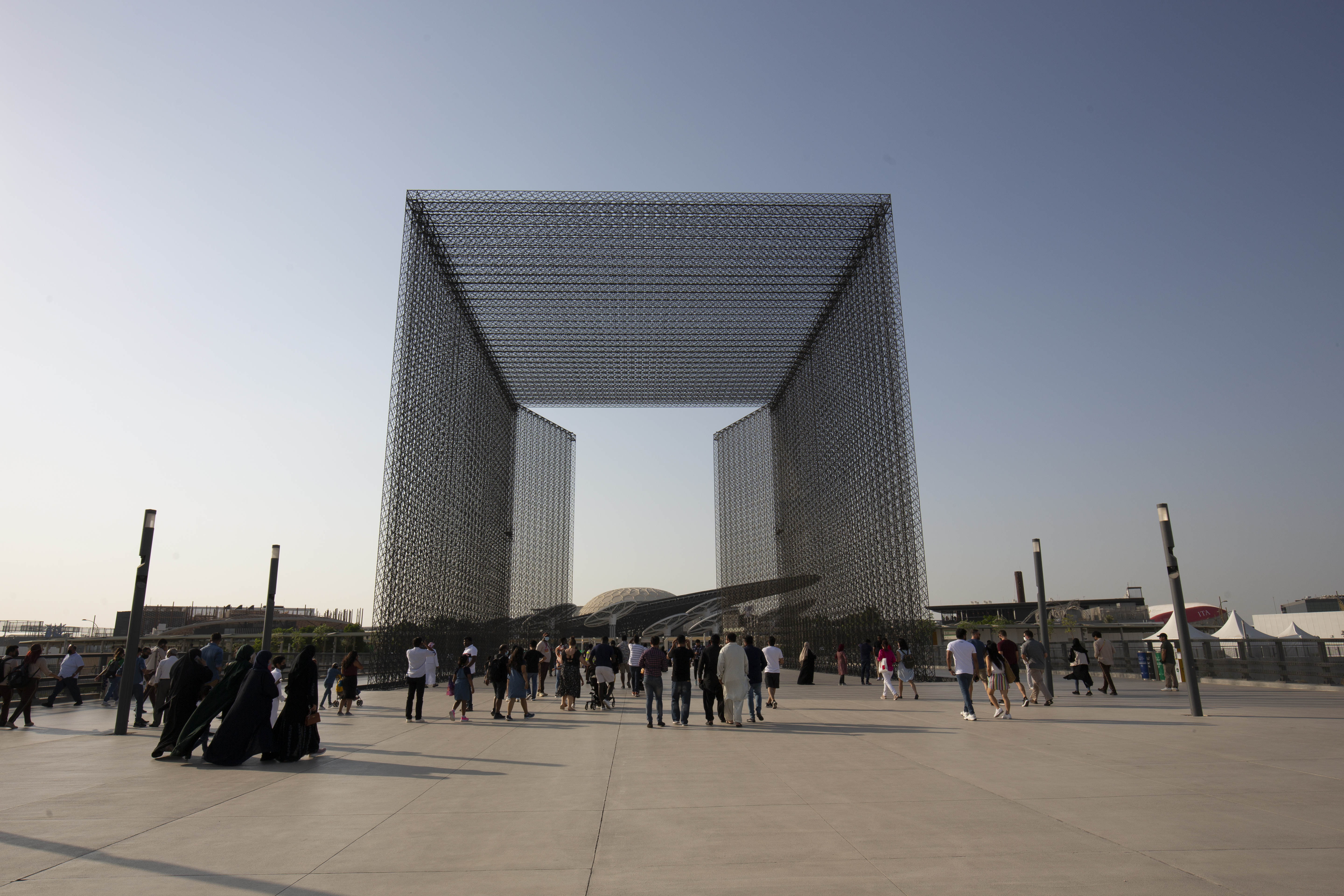
The day’s events will start at 11:00 am (9:00 am CET), in the Anfiteatro space, with an International Forum on “The European Capitals of Culture and the New European Bauhaus: how to build beautiful, sustainable, inclusive places”. The conference aims to bring to the fore the contribution of the Capitals to the New European Bauhaus, an innovative initiative launched by the European Commission aimed at fostering cooperation between thinkers and doers in imagining and creating places that are “beautiful for our eyes, minds and souls”. The examples that will be presented will show how the Capitals are redesigning our living spaces by bridging the worlds of culture and science, getting citizens involved, leaving no one behind and promoting accessibility. The conference, moderated by the RAI journalist Barbara Carfagna, will be opened by Paolo Glisenti, Commissioner General of the Italy Pavilion, followed by Benedetto Della Vedova, Deputy Foreign Minister, Barbara Gessler, Head of the “Creative Europe and ECoC programme” Unit - European Commission. Rossella Tarantino, Development and Relations Manager of Matera-Basilicata 2019 Foundation, will introduce the key topics of the Forum, followed by the keynote speaker Carlo Ratti, director of Senseable City Lab at MIT, who is also one of the designers of the Italy Pavilion. The European Capitals of Culture projects will be presented by Thierry Kruchten, Head of Tourism, Mobility and Sustainable Development - Esch 2022, Sara Vuletić, Programme Director - Novi Sad 2022, Dovilė Butnoriūtė, Head of International Relations- Kaunas 2022, Kaja Širok, Head of the EPICenter programme of a joint cross-border European Capital of Culture - Nova Gorica 2025, Rita Orlando, Project Manager at Open Design School of the Matera-Basilicata 2019 Foundation. Concluding remarks will be drawn by the Mayor of Matera, Domenico Bennardi.
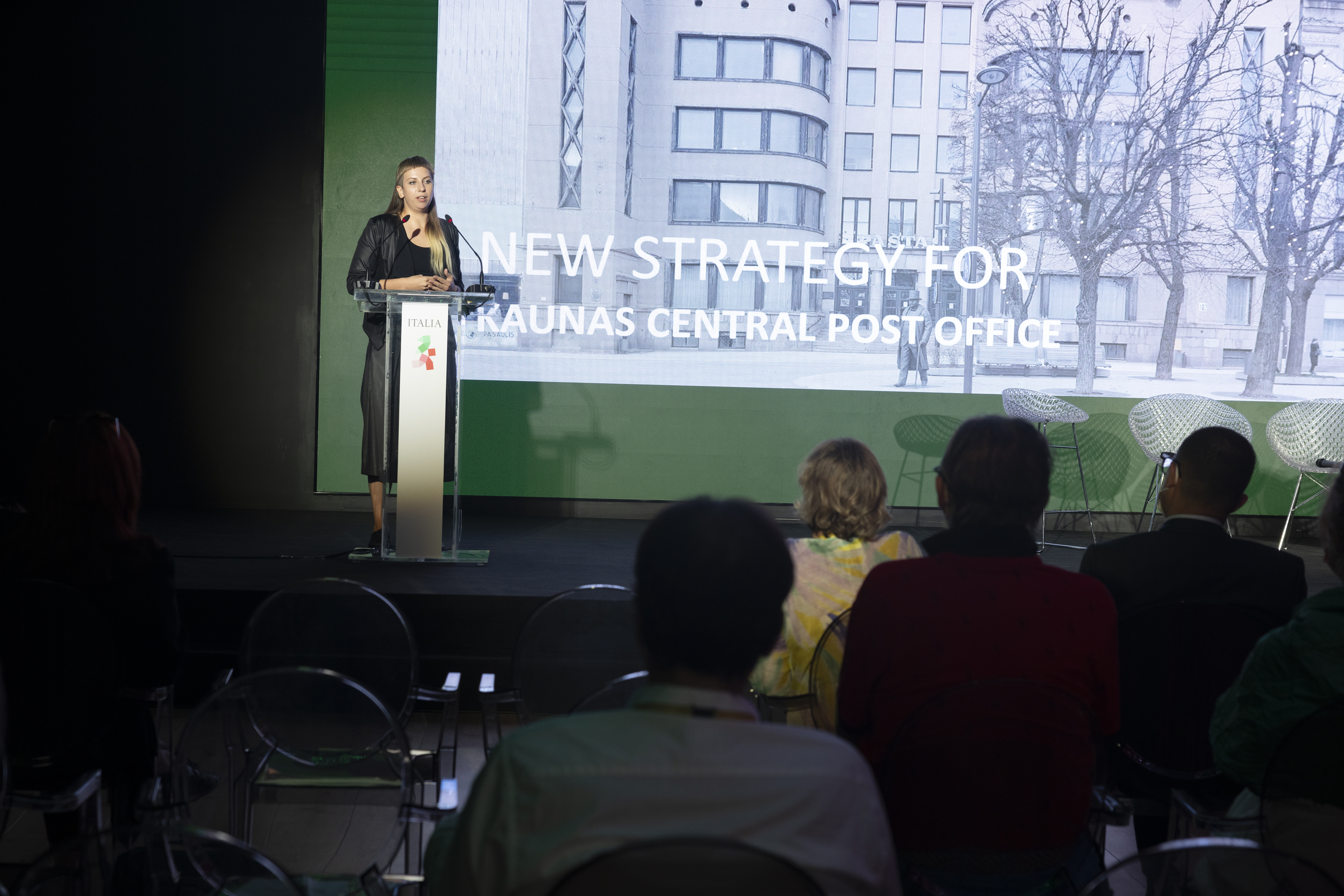
“Urban/rural: designing through culture new connections between overcrowded and sparsely populated areas” will be the focus of the second International Forum, scheduled for 4:00 pm (2:00 pm CET) in the Anfiteatro space. This conference will centre on several urgent issues raised by the pandemic, such as the need to imagine a more sustainable world based on a more balanced connection between these geographic areas, the role that culture can have in regenerating rural areas, overcoming stereotypes and building contemporary narratives about the resilient communities inhabiting these areas, and the “temporary citizenship” of artists and 21st century nomadic communities as a new way of repopulating these places.The Forum, opened by Rossella Tarantino and moderated by Beatriz Garcia, Associate Director of the Centre for Cultural Value at the Universityof Leeds, will host the following speakers: Chryssa Martini, Director of Premises & Infrastructure, Location Planning of the Artistic Programme - Eleusi 2022, Friderika Mike, Director of Programme Development - Veszprem Balaton 2023, Mika Vierimaa, Head of Administration- Oulu 2026, Giovanni Oliva, Director General of the Matera-Basilicata 2019 Foundation. The Mayor of Pietrapertosa, Maria Cavuoti, and the Mayor of Tricarico, Vincenzo Carbone, two of the Lucanian communities that still retain traces of Arab culture, will also be in attendance.
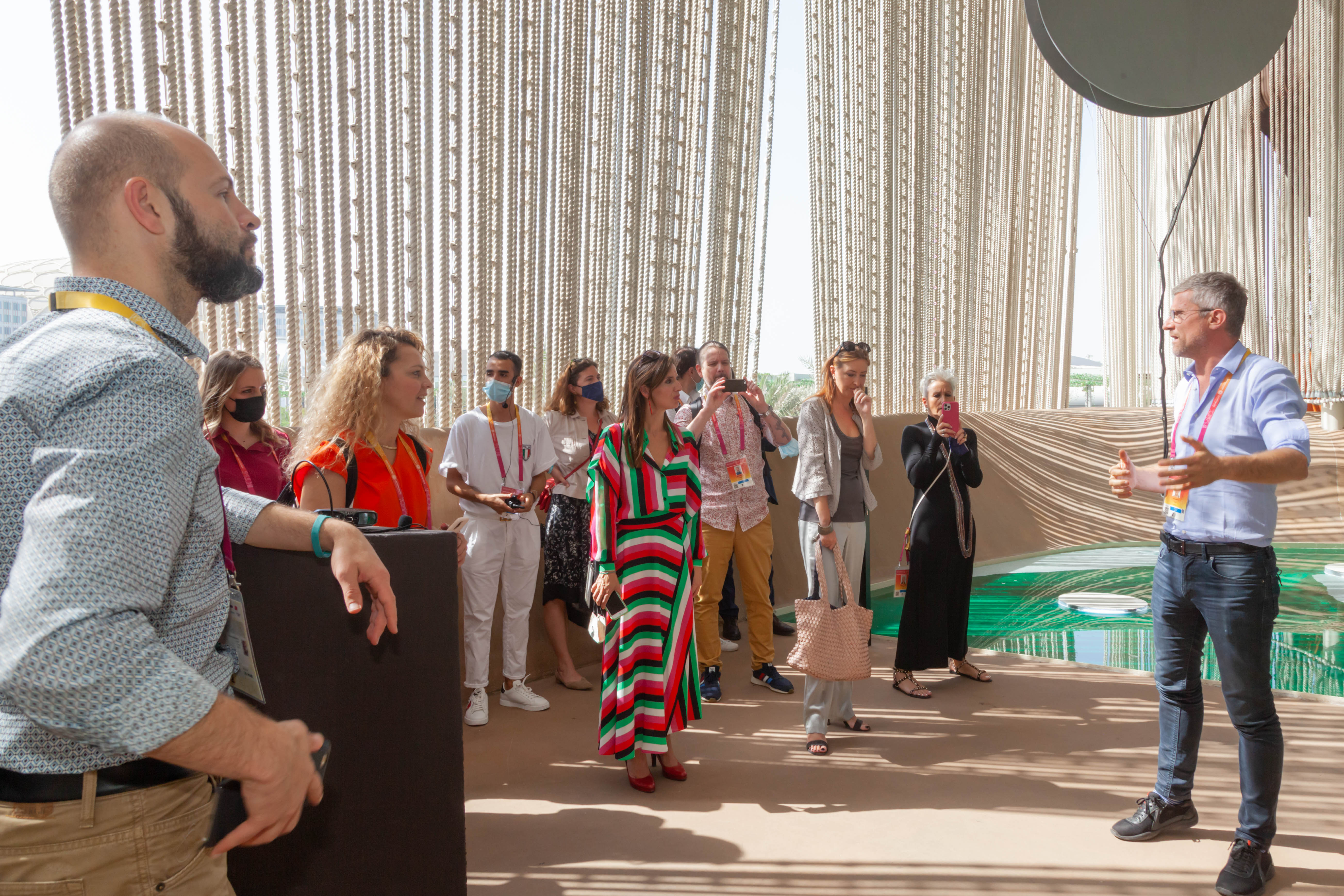
Both forums will be streamed on Italy Expo’s and Matera 2019’s Facebook pages, as well as on the pages of the European Capitals of Culture involved.
The Accademia space will be host to an event (with both a morning and afternoon session) called “The ECoC game”, a moving workshop on cultural geography developed by the Open Design School, a Matera-Basilicata 2019 Foundation initiative offering best practices at an international level in the field of new design practices, which has also become a partner of the New European Bauhaus. By playing live in an immersive and engaging way, Expo visitors will be able to embark on an imaginary journey into present and past European Capitals of Culture, in order to discover the highlights, curiosities and characters connected to the history of this project, which is fundamental to the lives of dozens of cities across the entire European continent.

The day’s events will end in the Anfiteatro space at 6:30 pm with the performance of “Dubai Session”, presented by Open Sound, an original project by Multietnica, co-produced by the Foundation for the official programme of Matera European Capital of Culture 2019. The format creates new repertories and stages original collective performances based on the fusion of contemporary electronic music and traditional sounds, transforming a musical archive into a promise for the future. The performance designed for Expo 2020 will be a moment of acoustic dialogue which will offer a live return to the result of the artistic co-creation and cultural hybridisation with Arab culture, generated by the encounter between Gaetano Dragotta, known as go-Dratta (the producer), the Arab musician Imad Kawala (caval) and the traditional percussionists from Basilicata - Agostino Cortese (percussion and cupa cupa friction drum) and Alberico Larato (zampogna bagpipe and lyre). The event will open with the spoken DJ set “Road to Open Sound” by Alioscia Bisceglia, where he, in the dual role of performer and project ambassador, will narrate, using music and words, the genesis and journey of Open Sound from 2019 to today.
The Beast of Kaunas: A Myth for Every Day in 2022 and Beyond
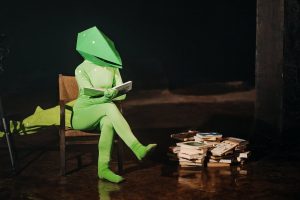
Kaunas Castle, 1st Fort of Kaunas Fortress, railway station and the bookshelves of little Kaunasians are just a few of many unexpected locations in which the Mythical Beast of Kaunas has already appeared since its official debut in 2019.
The main hero of the Contemporary Myth of Kaunas is also the mascot of ‘Kaunas – European Capital of Culture’ and the carrier of the project’s core ideas and values. It also happens to be quite a cute character drawn by illustrator Darius Petreikis. Rytis Zemkauskas, the curator of the Kaunas 2022 programme dedicated to the Mythical Beast of Kaunas, collected and put together all of the stories about the character travelling in the Sunny and Underworld Kaunas. Dozens of people chipped in with myths and legends about Kaunas they had heard – some of the contributors participated in creative writing workshops. At the same time, the rest of them just kept on walking, discovering and getting surprised, just like the co-created mythical character, a true European.
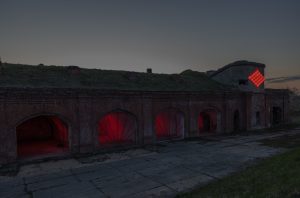
‘First and foremost, this programme is aimed at revealing the magical power of storytelling. Storytelling is an ancient tool that can shape a community, a city, a state. Myths and legends have always helped me to come together and be patriotic. Those coming from Ancient Greece inspired the contemporary European Union. The programme of the Mythical Beast of Kaunas has to offer a novel way of creating myths and legends right here and right now, using them as cultural tools. These are tools carrying values and encouraging empathy, community spirit, respect for each other, and tolerance. Every citizen is welcome to co-create them,’ Rytis Zemkauskas says.
The Mythical Beast of Kaunas was first seen in the Vilnius Book Fair in 2019 – this is where its fairytale book, created by Zemkauskas and Petreikis, was presented. The book is available in Lithuanian and English.
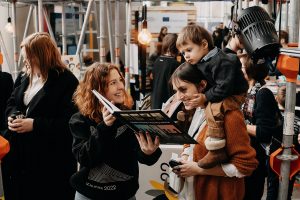
To Chill and Travel
An exciting encounter with the Beast awaits at the Kaunas Castle. With the help of talented composer Paulius Kilbauskas, the mythical creature found its bedroom below one of the oldest towers in Kaunas. His melodic snoring keeps surprising the visitors of the department of Kaunas City Museum and passers-by. Look for loopholes in the walls to ensure the best sound quality!
Yet another talented personality to collaborate with the Beast is Linas Kutavičius. Located in the Kaunas district, the 19th-century 1st fort of Kaunas fortress was brightened with light textures reminding the skin of a mysterious reptile. The new art installation by the light artist is a friendly gesture towards bats, animals that make up a significant population at the fort, and an invitation for people to (re)discover this historical object.
Did we mention that the Beast of Kaunas loves to travel? He made his appearance on a trolleybus as part of a mobile street art gallery some time ago; currently, portraits of his and his friends could be seen on a train wagon in the Kaunas Railway Station. Those approaching the wagon could also hear the tales of the Beast read by Rytis Zemkauskas.
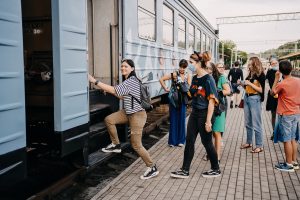
The Main act of Kaunas 2022
Since 1985, when the European Capital of Culture programme was launched, nobody has yet proposed a vision like this – to create a new myth for the city to help it change its path. The Mythical Beast of Kaunas – a project designed to create a unifying narrative for the city – will unfold in next year’s great mythical trilogy comprised of The Confusion (January 19–23), Confluence (May 20–22), and The Contract (November 25–27). The three main events are co-created by artists from Lithuania and abroad; they incorporate the ideas of historical personalities from Kaunas into the new work – as well as hints about the Beast. Will it finally have a physical body? One has to wait until 2022 and see…
Films and Games
The most kaunastic hero of all has already added a cinematic experience to its CV. Aideen Barry, an Irish artist, is working on a stop-motion animation film called ‘Pleats’ with a large team of artists, architecture professionals and modernism enthusiasts in Kaunas. The film, part of the Kaunas 2022 ‘Modernism for the Future’ program, will travel to international film festivals in 2022 – we can’t wait to see the Beast of Kaunas among the actors!
While ‘Pleats’ is still in post-production, one can already touch the Mythical Beast and go down its paths while learning the exciting secrets of Underground Kaunas in the limited-edition strategic board game. Created by a renowned Kaunas-based talent Urtis Šulinskas, the game has already found its place in the homes of many families, even those who have never been in Kaunas. Yet.

Another sweet addition to the Mythical Beast of Kaunas collection is a set of colourful pins created together with Kaunas city tourism, business, and investment development and international marketing agency Kaunas IN. Additionally, petrolheads are welcome to stick beastly magnets on their cars – the souvenirs fit fridges, too.
One can hear through the grapevine that the above mentioned are not the last souvenirs to please the fans of the Beast of Kaunas. Like most of the fantastic things in life, they will come unexpectedly. But here’s some gossip – have you ever wondered, for example, that Kaunas lacks its own perfume? The scent of a city is composed of various aromas, such as freshly baked goods, mamma’s lunch, wet asphalt, tree alleys, even petrol. The perfume of the Beast of Kaunas will be available before 2022.
The Future of the Beast
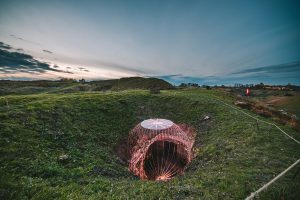
A city game offering a virtual reality experience is currently being developed – everyone will be able to play it online or by downloading a mobile app. The gigantic project will connect the myths and stories of the city and its characters with the essential cultural hotspots in Kaunas and Kaunas district and museum collections. The player will be able to visit historical locations in the area with the Beast as a guide.
Photographer Chiraqas Jindalas (IN / NZ) is working on a photo installation, ‘Underground Kaunas’, set to be opened in Autumn 2022. A unique technology involving negatives, scanning and lightboxes will provide the opportunity to see what’s below everyday Kaunas.
A total of three premieres by Kaunas State Puppet Theatre and Apeironas theatre from Klaipėda will reach the stage in 2022. The experiential and even therapeutical theatrical games will be used as tools to get to know the Beast of Kaunas and analyze its features.
The list of possible appearances of the Mythical Beast of Kaunas has no specific end. The character will add its charm to numerous events planned for 2022.
Next year, Kaunas and Kaunas district will become one big European stage and turn the city to a place where you will not escape culture. More than 40 festivals, 60 exhibitions, 250 performing arts events (of which more than 50 are premieres), and over 250 concerts are planned to take place in 2022. It is going to be the year-long non-stop biggest co-creative festival of all. Come co-create and celebrate with us!
Full programme: https://kaunas2022.eu/en/programme/
Kaunas 2022 memory program will build bridges between different cultures, religions and languages
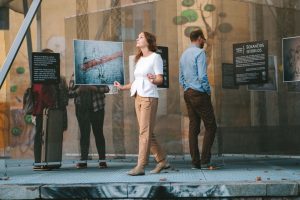
In 2022, the Kaunas 2022 program “Memory Office” will invite the audience to a year-long cultural research of Kaunas DNA. An extremely rich and multi-layered artistic program will lead to a brave confrontation with the city’s complex past like a mirror that helps you get to know yourself and your humanity better.
The program of events, which brings together creators from Lithuania and all over the world, plus a group of partners, will allow locals to get to know their city better, and for the visitors, it will become an atlas of new stories of Kaunas. World-renowned artists William Kentridge, Philip Miller, Jenny Kagan, the Sala-Manca Collective group of artists, and others will help to explore the city. The most important events in the city’s history, which shaped, changed and raised the city from the Second World War, the 1972 “Kaunas Spring” to the myths, stories and legends of the present-day city will be presented through exhibitions, concerts and performances.
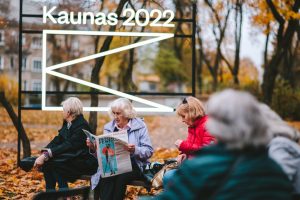
Extensive four months programme of the CityTelling Festival
The bigest event of the “Memory Office” program, the CityTelling Festival, which is already popular with visitors, will take place in 2022 for four months and will talk about the return and the community spirit. In this more than ever conflicted world, we will try to forge a new relationship not only with our painful history, but also with those who live next to us today. Extensive program of the festival includes stories of various forms that build bridges between different cultures, religions and languages. Stories that teach to empathize and listen to the Other.
The international program will invite to exhibitions, performances, concerts of internationally acclaimed artists, new routes created by city history enthusiasts and excursions to explore the different side of the city. The storytellers’ project “Where can I find you?” will spread around the city’s cafés, streets and courtyards, looking for everyone who wants to hear and share the stories of the modern world. Finally, the conference on the idea of Europe will raise one of the most pressing questions of today: what is Europe and what is our place in it?

Special attention to the Jewish memory of Kaunas
The Memory Office program and the CityTelling Festival will pay special attention to the Jewish memory of the city. In 2022, the European Capital of Culture will invite Litvaks scattered all over the world to meet at the World Litvak Forum. On 29-30 September, in the program of discussions and culture, famous artists, scientists and representatives of the world of culture will talk about the Litvak identity, memory, and the role of culture in giving meaning to multicultural memory and creating new opportunities for dialogue.
One of the most anticipated events of Kaunas – European Capital of Culture 2022 is the work “Kaunas Cantata: Reconciliation” by composer Philip Miller and artist Jenny Kagan. The largest and most massive musical experience of Kaunas to date, dedicated to the symbolic reconciliation of nations, will be played during the Litvak Forum. More than 400 performers joined this piece of vocal instrumental music: local musicians and singers, choirs, representatives of different genres and generations.

The major events of the four-month CityTelling Festival program are also dedicated to the Jewish theme – exhibitions, performances, musical stories, installations dedicated to the heritage of Jewish memory and cultural signs in the city spaces, and many other activities. Litvak artists who returned to Lithuania from the Republic of South Africa, Great Britain, France and Israel took a particularly active part in the development of the program. Main events: William Kentridge’s exhibition “What We Don’t Remember”, musical performance “Dybbuk”, Jenny Kagan’s exhibition “Out of the Darkness”, photography exhibition “The Last Litvaks”, art installation in public spaces “Threshold” and others.
The book “Kaunas Jews”, which will be released in Lithuanian and English languages this year, is no less important. This is the first such presentation of the Jewish history of Kaunas from the most important facts, concepts and names. This most comprehensive book on the subject to date does not seek to answer all the questions, but starting from the 15th century will consistently remind the contribution of Kaunas Jews to education, medicine, industry, business, culture and other areas of life, and will touch on the painful pages of history.

Events dedicated to the times of the disobedient and a different look at the city and its people
The special program of events will remind of the time that led to the biggest historical turning point in the life of the city. The nineteen-year-old Romas Kalanta who set himself on fire on 14 May 1972 and the events that followed led to the birth of the so-called “Kaunas Spring” – anti-Soviet protests that involved thousands of people and took place mainly in Laisvės alėja (Liberty Avenue). These events left traumatic traces not only in the further development of the city, in its cultural life, but also in the fates of a large number of young Kaunas residents. These historical events and the period of the disobedient will be revived within the Kaunas 2022 program through performances, exhibitions, concerts, discussions, meetings, etc. dedicated to this topic.
The crucial point of this program will be the exhibition “1972: Regime, Youth and Art”, in which paintings, photographs and films, documentary testimonies of musical life, youth fashion and other artefacts will tell about alternative culture and non-Soviet way of life in Soviet Lithuania. The exhibition will reveal the diversity of mindsets and creativity in the Soviet background that levelled everyone. It will explore how aesthetic tastes and ethical attitudes in Soviet times shaped different patterns of life and the atmosphere of disobedience to the government.
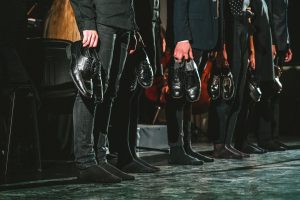
A series of events dedicated to the identity of the city will invite to look at the city and its residents from a different angle. We will examine the city, re-explore the city’s industrial heritage and histories of some factories. Perhaps the most interesting highlight of the program is the conversation between Kaunas and Vilnius about the confrontation between the two cities, the silent struggle and the mute dependence. In the exhibition, which will take place simultaneously in the two cities, MO museum together with Kaunas City Museum will remind how the big cities shaped each other and how modern Lithuania arose from the tensions between them.
Important events: Exhibition “1972: Regime, Youth and Art”, concert ” Made in Kaunas”, Historical-documentary performance “Kalanta”, rock opera “Kalanta”, exhibition “Kaunas – Vilnius: move the mountains”, route “Memory Circle”, exhibition “The Big Industry” and others.
Kaunas walls also tell stories
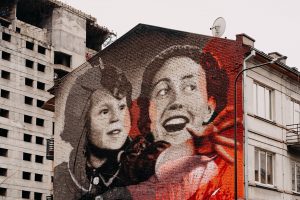
Kaunas and Kaunas district have been adorned with works of street art that bring back the faces of those who lived before us, tell their fates and present culture. This way, the poet Lea Goldberg , the charismatic Rosian with her mother Gerta, and the signs of the Tartar legacy returned to Kaunas again. The number of these meaningful wall drawings is increasing, so when wandering around Kaunas, Kulautuva or Kačerginė, don’t forget to look around and stop to read the inscriptions. Look for the special memory street art route at atmintiesvietos.lt.
And this is only a short look at the Kaunas – European Capital of Culture 2022 program “Memory Office”, which brings back the memory of the city’s ethnic communities.
Next year, Kaunas and Kaunas district will become one big European stage and turn the city to a place where you will not escape culture. More than 40 festivals, 60 exhibitions, 250 performing arts events (of which more than 50 are premieres), and over 250 concerts are planned to take place in 2022. It is going to be the year-long non-stop biggest co-creative festival of all. Come co-create and celebrate with us!
Full programme: https://kaunas2022.eu/en/programme/
Modernism for the Future'. Architecture as Inspiration for Cinema, Dance, Music and Beyond

While becoming the European Capital of Culture is the most anticipated event in Kaunas, it's not the only one. The UNESCO World Heritage Commission now has to decide whether the modernist architecture network of Kaunas will be included in the prestigious global list of protected heritage. The acknowledgement would continue the list of international appreciations that already includes the European Heritage Label.
The step to UNESCO is a challenge not only for architecture and urbanism professionals but for every citizen of Kaunas and Kaunas district. This is where 'Modernism for the Future', one of the key programmes of Kaunas 2022, steps in. It aims to awaken the responsibility for our surroundings and create a solid emotional bond with the urban landscape and heritage.
How much modernism does Kaunas have?
During the Interwar Period, Kaunas and Kaunas District have become the epicentre of significant events in Lithuania and Europe. This period has left some 6000 buildings created in the modernist spirit.
These are not only buildings but also locations, ideas, authors, builders, and promoters. Their destinies, too. To have such a condensed heritage enriched by various individual stories and meanings is a great treasure. It is a living testament of history from the period of prosperity and modernisation that changed the everyday habits and coincided with significant changes in European and global cities, urban places and their residencies. Within a short period, modernism has become a dominating style of architecture. However, most of these buildings are in poor condition, forgotten, abandoned, or even empty today. 'Modernism for the Future', together with its extensive list of partners, aims to change this.
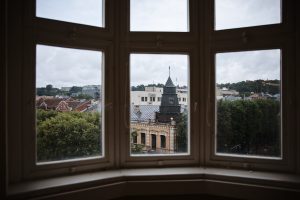
The first steps
'Modernism for the Future' is an open space for initiatives and meetings, welcoming professionals from various fields, building owners, heritage community and representatives of cultural initiatives for discussions, idea workshops, art and culture, which together create the strategy for preservation, interpretation and dissemination of modernist heritage.
Symbolically, the program chose to creatively enable 360 buildings in 365 days next year. The number 360 symbolises all possible perspectives of modernism: cultural, political, economical and more, whereas the number 365 asks us to notice everyday heritage.
The project includes the heritage community gathered on a website, collecting and sharing knowledge about modernist objects, their residents, and events of Kaunas and other Lithuanian and European cities. Dissemination of good practice, creative workshops, educational activities, as well as calls for artistic interpretations of modernism and art projects in modernist spaces are all part of the programme of the project.
The first international 'Modernism for the Future' conference took part in Kaunas in 2018. Two international summer schools have already been organised in the framework of the program. The first one explored downtown Kaunas; the second one took the students to the Kačerginė resort in the Kaunas district. In 2021 and 2022, the school is organised by the Kaunas University of Technology.
A unique movie for international audiences
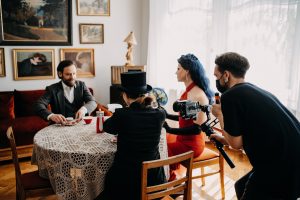
Probably the most unexpected idea of 'Modernism for the Future' is a film that will be premiered in international festivals. 'Pleats/Folds', directed by Irish artist Aideen Barry, tells the story of Kaunas modernism and its value for future generations with the help of stop motion animation. Students, volunteers, residents of modernist buildings, creative writing enthusiasts, dancers and even the Mythical Beast of Kaunas co-created the film.
'A video art project aimed at international audiences was considered already when preparing the bid for Kaunas 2022 – the initial idea was to include the local personalities in the story about the unique architecture of interwar Kaunas,' Viltė Migonytė-Petrulienė, the curator of 'Modernism of the Future', remembers. She explains that inviting Aideen Barry added ambition to the idea – the artist is known for paying a lot of attention to social topics, including local communities. The curator says, 'Pleats/Folds', a creative playground for the Kaunas and Kaunas district residents, is no exception. The filmmaking process included workshops of art as therapy, game and way of learning, while the result is as important as the path. It's a collective message to Europe and the world about the modernist Kaunas of the future, as well as its biggest treasure – the people that love the city.
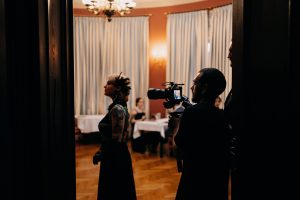
From electronic music to investigating shame
'Modernism for the Future' already has various collaborations with local and foreign partners lined up for 2022.
'MoFu 360/365' is a project financed by the European Union's programme 'Creative Europe 2014–2020' exploring connections with other European cities, from Eastern, Central to Western. Two-year project participants from Kaunas 2022 (Lithuania), Institute of Culture Strategy (Lviv, Ukraine), interdisciplinary arts centre 'Vaizard, z.ú.' (Brno, Czech Republic), regional development associations in the Kortrijk region and inter-governmental heritage organisation 'Intercommunale Leiedal' (Belgium) and partners in Tel Aviv (Israel) invite artists, together with local researchers and the heritage community, to create 17 artistic projects in modernist buildings.
The unique projects will strengthen the narrative of Europe's modernist heritage and will seek to reflect its contemporary significance for the global society. The project's final result will be presented at the opening weekend of the European Capital of Culture 2022 exhibition in the Kaunas Central Post Office. The exhibition will run for four months.
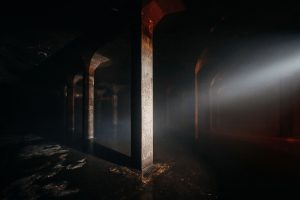
In 2022, the Kaunas territorial division of the historical Lithuanian Artists' Association will be launching the 100 Images of Kaunas project: a series of creative works and curated art exhibits located in 40 public and residential spaces of Kaunas and Kaunas District, built during the Interwar period.
The Reciprocal Residency Programme DeMo (Decoding Modernity) is an exchange programme during which the residents will have the opportunity to analyse the developmental processes of modernity in various social and cultural contexts. DeMo, a three-year programme (2020-2022) of Kaunas Artists' House, together with the Londonderry Center for Contemporary Art, the thankyouforcoming residency program in Nice, the Culture Center LAB in Novi Sad, and other partners invites artists, curators, researchers of the cultural field, and multidisciplinary collectives to explore potential connections, overlaps and divergences between the different forms and expressions of modernity.
The Kaunas division of the Lithuanian Union of Architects will be launching three projects in 2022 to analyse and creatively retell the history of Kaunas architecture during the 20th century. The first project, [In]visible Architecture by Rasa Chmieliauskaitė, aims to engage people with visual impairments in learning about their architectural environments through the use of new tactile tools. The second project, Architecture of Desire by Tautvydas Urbelis, is a continuation of international partnership with the Architecture of Shame project in Matera, Italy, in 2019. There, the artists analysed the expression of shame in local architecture. In Kaunas, the author will be presenting a creative interpretation related to the expressions of desire in spaces of Kaunas City. Additionally, the award-winning architect Gintaras Balčytis and his team will present an exciting program of Kaunas Architecture Festival that will include exhibitions, workshops and a forum.

Good Music Live (Gera Muzika Gyvai in Lithuanian) aims to acquaint the Lithuanian audience with world music – a genre of music that embraces both modernity and traditionality by merging deeply-rooted traditions with the feelings and experiences of a modern person. In 2022, Good Music Live will be presenting the music programme World Music for Kaunas – a series of events in modernist buildings of Kaunas and Kaunas District, with concerts taking place all year round in apartments, public facilities and spaces built during the Interwar period.
Digital Tsunami, a platform for underground music, is organising a festival called Optimismo. It will celebrate modern electronic music and architecture, employing contemporary experimental music to reveal the relevance and value of modernist heritage and architecture in Kaunas. In 2022, Digital Tsunami will enrich the city's numerous spaces with a symbiosis of music and contemporary technological solutions.
Kaunas Dance Theatre AURA is the very first theatre of modern dance in Lithuania. Its project Pulsating Modernism of Kaunas by AURA includes a series of interactive guided excursions accompanied by live performances. Set to be initiated in 2022, the programme will provide the opportunity to get to know the modernism of Kaunas from a different point of view.
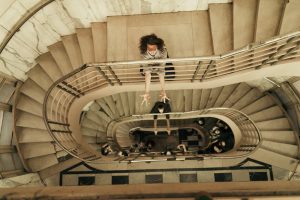
Kaunas Photography Gallery is currently organising a programme of residencies Photography – A Document for the Future, which will provide the opportunity to analyse and represent the modernism of Kaunas in an international context. The project will be welcoming residents from Germany, Scotland, the Netherlands and more to present their interpretations of Kaunas modernism.
The National M. K. Čiurlionis Museum of Art, known as the crown jewel of Kaunas modernism, also has several departments in other historical buildings of Kaunas, namely houses and apartments of interwar celebrities. The A. and P. Galaunė House-museum has already opened an exhibition, 'Arno Funk[tionalism]', dedicated to one of the busiest architects of the golden era of Kaunas.
'Modernism for the Future' is just one of many programmes of Kaunas 2022 that help Kaunas and Kaunas district to become a contemporary capital and one big European stage. In 2022, it will be a city where you cannot escape culture.
Full programme: https://kaunas2022.eu/en/programme/
Robert Wilson: ‘No one can do what I did, and I don't want anyone to try to do it’
In September 2022, the premiere of Dorian, based on the work and life of Oscar Wilde and the biography of Francis Bacon, is scheduled in National Kaunas Drama Theatre as part of the Kaunas 2022 program. Directed by Robert Wilson, the play was intended for one actor, but while talking to the American artist right after the casting in Kaunas, the statement became yet another question. One thing is for sure – even though Wilson states he’s ‘always writing the same novel,’ after 55 years in the theatre world, he’s still full of surprises.

I feel that the theater people in Kaunas are pretty intimidated by you. They respect you and are afraid of you. How do you feel about that?
I’m afraid of myself. [laughs]
I don’t know. I think I’ve always been out of step and a bit different.
I think that today was very strange for these actors to go through what we just went through. It’s my way of going about it. I never really know exactly what I’m going to do. I guess I would not be working in the theater if I had studied theater or wanted to do it.
When I first saw theater – I came from Texas, and I had never been to the theater – I strongly disliked it. I didn’t like actors. I didn’t like all that acting. It was so unnecessary, complicated and I didn’t want to be in front of actors trying to express themselves and impose their emotions on me. I’d rather go and be alone in a room. I went to the opera, and I disliked that even more. I’d rather again go to my room and close the door and listen to a recording not to see some singer overacting in front of me. The costumes were ridiculous. The set was ridiculous, and I would rather close my eyes. [laughs]
I guess I made theater because I strongly disliked everything that I was seeing. I didn’t plan on a career in the theater. It happened by accident. I wrote a play with a black deaf boy that had never been to school and knew no words. It was seven hours long and silent. I showed part of it in New York. People said that I couldn’t show seven hours. It was too long: ‘People are not going to understand. They are not going to sit seven hours for something that is silent.’
I went to France and was going to do two performances. Pierre Cardin invited me to show it in the theater. We played Deafman Glance for five and a half months to 2,200 people every night. Charlie Chaplin came to see it twice. My career was established. I didn’t know anything about theatre. I didn’t even like it. I was asked to go to La Scala, I was asked to go to the Berlin Opera... I always thought, ‘Well, I’m going to do another production to pay the rent,’ because I really wanted to be a painter. I was not a very good painter. [laughs] For 55 years, I have been working in theater.
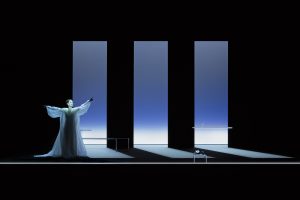
Did you see what you were looking for here in Kaunas?
Well, no, but I would stay very open-minded. I’m doing this play in Germany and the actor there is totally, totally, totally different from these actors. He’s unique.
I wrote Hamlet: A Monologue in 1975 and performed it myself in Paris in 1977. It’s now being performed by somebody else in Paris. The first thing I said to the actor doing my role, I said, ‘You’ll never be able to do what I did.’ No one can do what I did, and I don’t want anyone to try to do it. He’s very short, and I was very tall and skinny at the time. He’s a different body type and a completely different actor. One reason I chose him because I knew he was could never be anything like myself. The movements are the same. The light is the same. The stage set is the same, but he is an entirely different person. In Kaunas, we knew from the beginning that we look for somebody different. We don’t fall back and try to mold production around what the German actors are doing.
It means that there will be two very different performances in the end.
They will because the people are different. I’ve from time to time have gone back and revived productions. I made an opera with Philip Glass called Einstein on the Beach. We did it in 1976, and we did the last revival a few years ago. Although everything is the same in terms of movement, stage set, lighting, music but the people are different, so the story is different. The play is different because the people are different.
A play for one performer means a lot of pressure on that single person.
Even tonight, I was talking about doing it with two. I don’t know. I’m still open.
Two are still less than 10 or 15. It’s lots of pressure but at the same time lots of artistic freedom. Is that right?
Well, the difficulty, if you’re alone on stage, is that you don’t have a partner. Your partner is the public should always be the public. Anyway, a few years ago, I did a Mary Queen of Scotts with Isabelle Huppert, the French actress. It was first supposed to be done with Nicole Kidman. Then it was Meryl Streep, and there were four or five actors, including Cate Blanchett. They each backed out because they said, ‘I need a partner on stage, and it’s a monologue for one person,’ but Isabelle had no problem. S
You mentioned people like Philip Glass; you’ve also worked with Lou Reed and Lady Gaga. What do you learn from artists outside the immediate theatrical circle?
Well, Gaga is remarkable. Her talent is so enormous. She’s a classical pianist. She plays Mozart. I made 20-something different video portraits of her. For one of them, she stood for 11 hours without moving. 11 hours and she’s a popstar. How do you stand there and be interesting for 11 hours without moving? She speaks the text of Marquis de Sade, which I did based on paintings from the Louvre Museum. It’s amazing. She speaks like a classical actress. She can bite and speak words. She’s about as professional as you can get. She’s a hard worker. She does her homework. She’s highly intelligent.
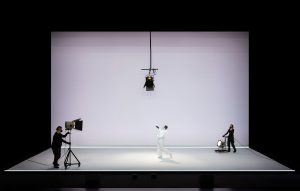
Have you always been a hard worker?
Yes. I’m a slow learner. I was always the worst one in school, the last of my class, but I had to work harder than most other kids. I had a roommate when I was at the University of Texas. He was first in his class, and I was just barely passing. I had to work all the time and do homework. He just breezed through the University of Texas. It was much more difficult for me. As I learned Hamlet, it took me four and a half years. I had to go to bed every night studying. I had to wake up in the morning and study. I had to do it in the shower, walking down the street, on the bus, or wherever. But once I do learn something, the thing just sticks.
For how long did you carry the idea of Dorian in your head?
Well, it’s been three or four years. I started with the idea that two was one. Even though it was a monologue, it was always about two characters as one. You have two hands, the left hand, and the right hand, but it’s one body. The left side of the brain and the right side of the brain, but it’s one mind. We think one plus one is two, but actually, two can be one. Heaven and hell are one world, not two.
You first worked with the writer Darryl Pinckney more than three decades ago, and there has been a handful of successful collaborations ever since. Was he an obvious choice for Dorian as well?
One thing I’ve always found so boring in theater is that it’s like ping pong. ‘Hello, how are you? What’s your name? You have beautiful blonde hair.’ ‘My name is Bob.’ ‘What did you do last night?’ ‘I drank a lot of vodka.’ ‘Are you hungover today?’ I hate that in the theatre. Darryl just writes a body of words so that you don’t have a ping pong situation. He’s a very elegant man with language and words. I wonder how it’s going to be translated here. Anyway, we won’t have a ping pong situation, even if I put two people on stage now, which I’m considering, but it would not be ‘Hello, how are you?’ ‘I’m okay.’
Who decided or had the idea to incorporate the biography of Francis Bacon into the story?
It was more Darryl. We started listening to Peggy Lee singing The Alley Cat Song. Peggy Lee is very cool and hot at the same time. Irony. So, I was thinking about an alley cat. That was really how we started Dorian. Then, by accident, we found this parallel between Francis Bacon. This guy broke into his studio in London, and instead of calling the police, Bacon painted his portrait, and they became lovers. It was, in some ways, a very odd, strange parallel with Oscar Wilde.
Is Dorian going to be the classical work by Wilson?
Marcel Proust said, ‘I’m always writing the same novel.’ They asked Albert Einstein once he said, "Mr. Einstein, can you repeat what you just said?" He said, "No, there’s no reason for me to repeat what I just said because it’s all the same thought."
I wake up, and that’s what I do. It’s not like I can go to an office, work, and then I go home and watch TV and scratch the dog, and I think my work is a way of living. It’s life. I never think about it being work. It’s just what I do.
Next year, Kaunas and Kaunas district will become one big European stage and turn the city to a place where you will not escape culture. More than 40 festivals, 60 exhibitions, 250 performing arts events (of which more than 50 are premieres), and over 250 concerts are planned to take place in 2022. It is going to be the year-long non-stop biggest co-creative festival of all. Come co-create and celebrate with us!
Full programme: https://kaunas2022.eu/en/programme/
[embedyt] https://www.youtube.com/watch?v=MYyrTPiAczo[/embedyt]


